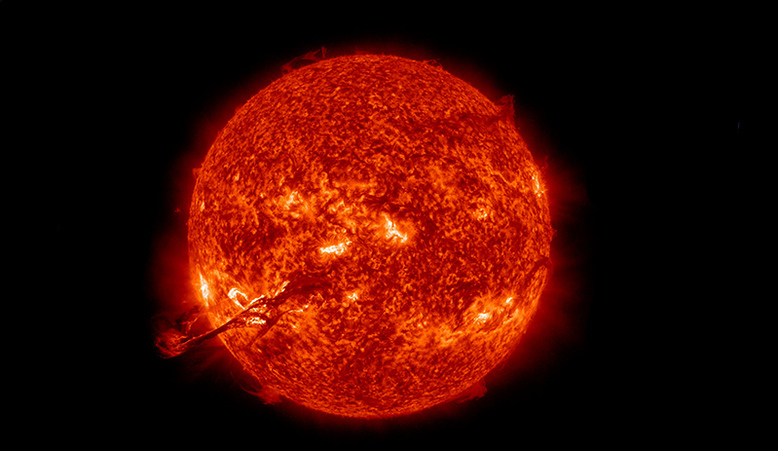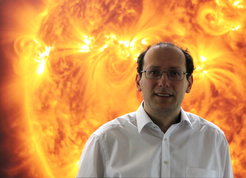Nina-Elisabeth Nèmec
I am a PhD student at the International Max Planck Research School at the Max Planck Institute for Solar System Research,
working in the SolVe group under the supervision of Alexander Shapiro and Natalie Krivova of MPS and Stefan Dreizler of the
University of Göttingen. My research focuses on the connections between solar and stellarbrightness variations and the
characteristics of solar-type stars. In particular, I examine the dependence of the photometric variability on the inclination,
distribution and evolution of magnetic features. In this way, we wish to explore whether or not the Sun is similar to other Sun
like stars, and if it is the odd one out, why? Moreover, we have recently started expanding our work to include more active
stars in order to see if we can explain the observed dependence of the photometric variability on the rotation rate.
Before coming to Göttingen, I finished my Master of Astronomy degree at the University of Vienna. In my master thesis, which was
produced under the supervision of Prof. Manuel Güdel, I studied the behaviour of the XUV radiation emitted by cool stars. We
proposed a new way of obtaining spectra in the EUV regime that is based on semi-empirical models as well as the chromospheric
activity of a given star.
I also completed my Bachelor of Astronomy degree at the University of Vienna, for which I used a surface flux transport model to
simulate the Sun at higher rotation rates and higher activity levels. I also implemented a simple wind model based on the
magnetic field strength.
Research Interests
Solar and stellar variabilitySolar and stellar magnetic fields
Solar and stellar activity
Sun-Earth interactions
Planetary habitability and exoplanets
Publications
First author:
AA, Volume 638, June 2020
AA,Volume 636, April 2020
Co-author:
AA Volume 639, July 2020
In preparation:
Key results:
Power spectra of solar brightness variations at various inclinations
In this work, we extend the SATIRE model to model the dependence of the solar brightness variations (as represented by the power spectra) on the inclination. In order to accomplish this, we employ a surface flux transport model (SFTM, Cameron et al.,2010; , Jiang et al., 2011) in addition to the SATIRE approach (similar to Dasi-Espuig et al., 2014). We find that moving the observer out of the ecliptic plane decreases the variability on timescales below 100 days, but increases the variability slightly on the solar-cycle timescale (about 11 years).
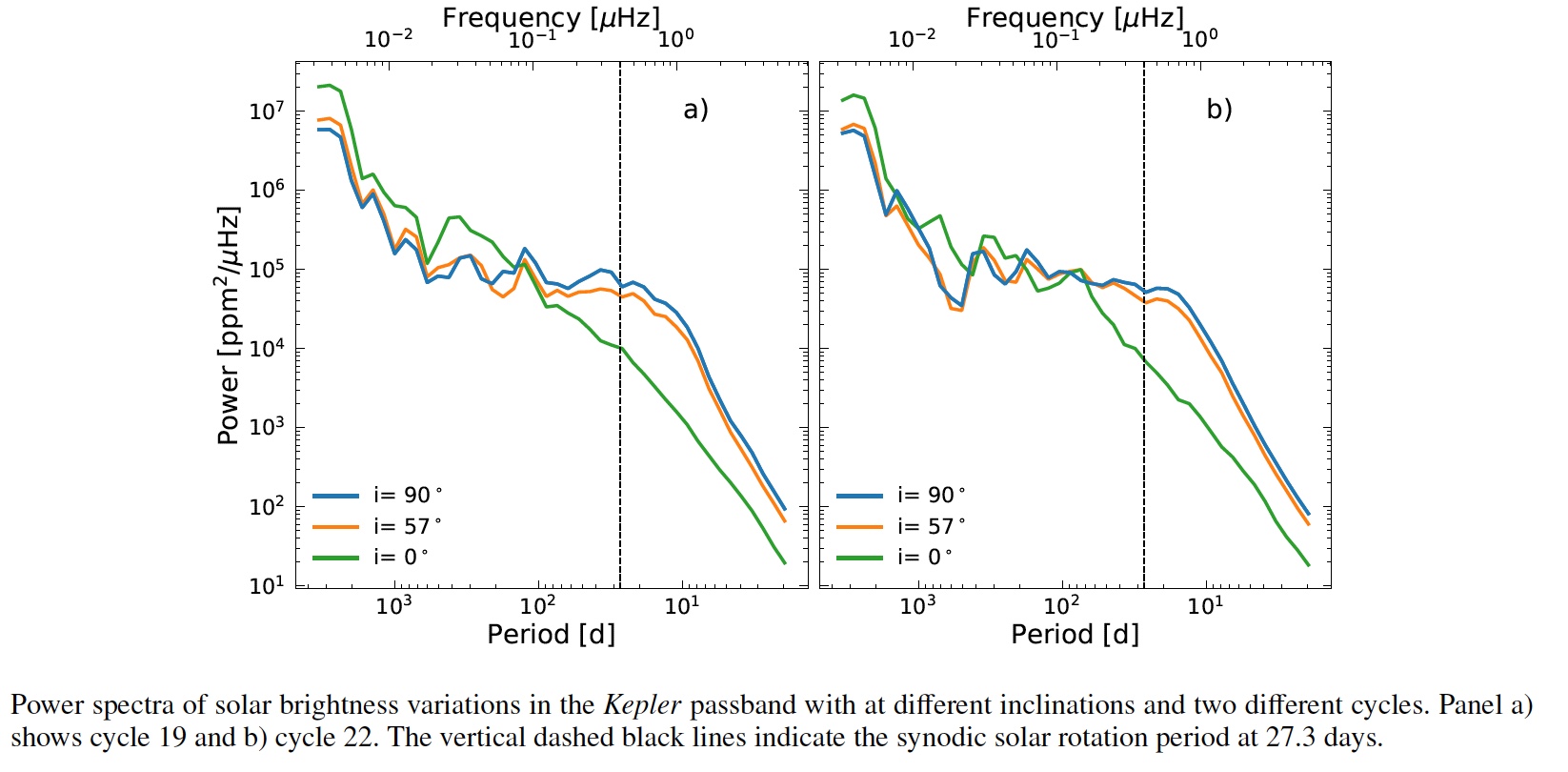
Furthermore, this model allows us to disentangle the effects caused by the rotation of the magnetic features that drive the brightness variations from those caused by their evolution. The findings suggest that the variability on timescales below 30 days is mostly brought about by the rotation of the features, whereas on the solar-cycle timescale, the evolution of the features is more important.
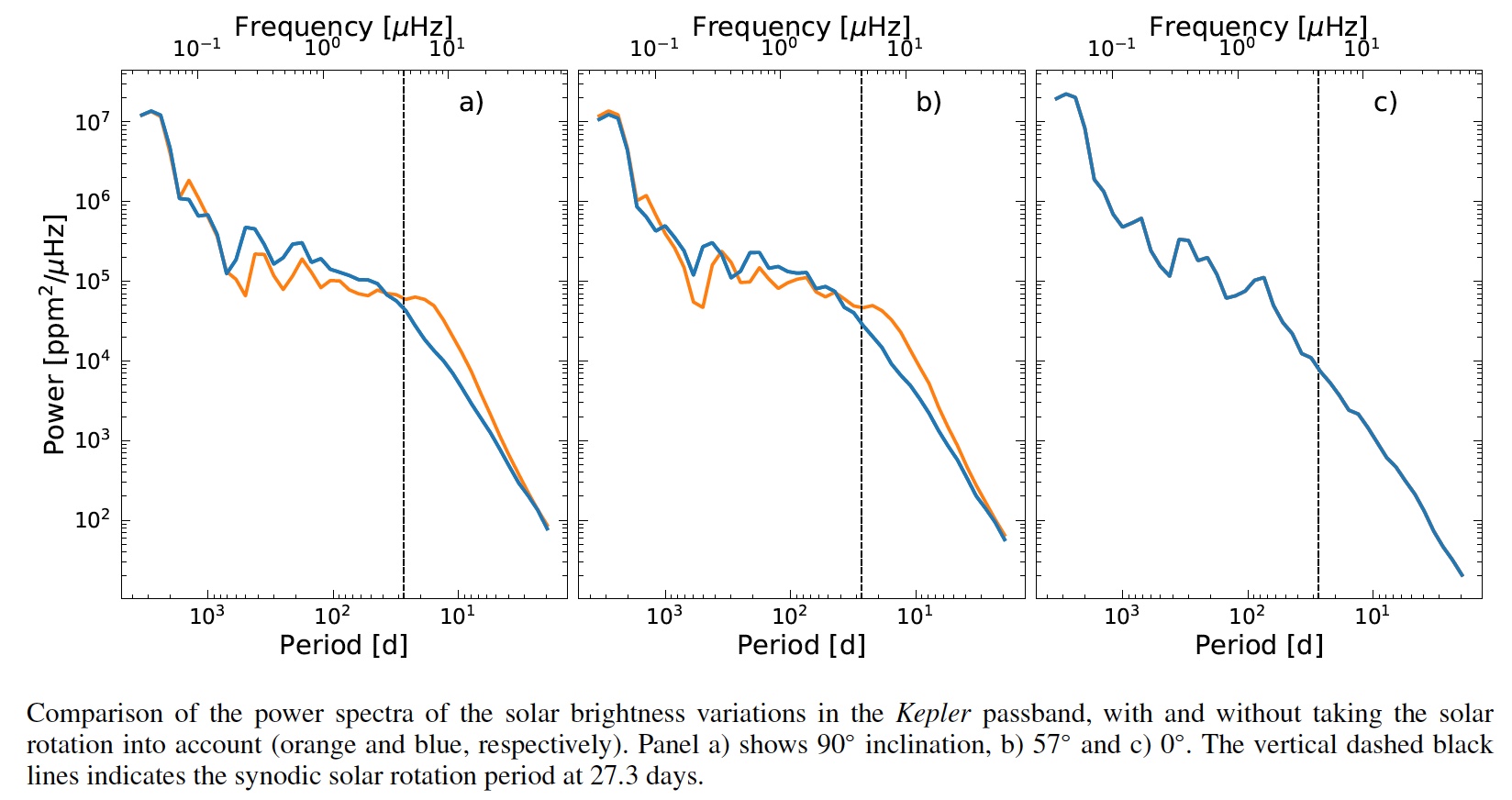
Connecting measurements of solar and stellar brightness variations
Comparisons between brightness variations of the Sun and of Sun-like stars suffer from observational biases, such as the observed wavelength regime or the inclination of the star’s rotation axis with respect to the observer’s line-of-sight. The solar variability is often conveniently expressed through the total solar irradiance (TSI), whereas stars are often observed in narrower passbands centered at different wavelengths.
We find that, generally speaking, filter systems that operate towards the blue part of the visible light regime tend to overestimate the solar variability as represented via the TSI, whereas filter systems centered closer to the red end of the spectrum tend to underestimate the variability.
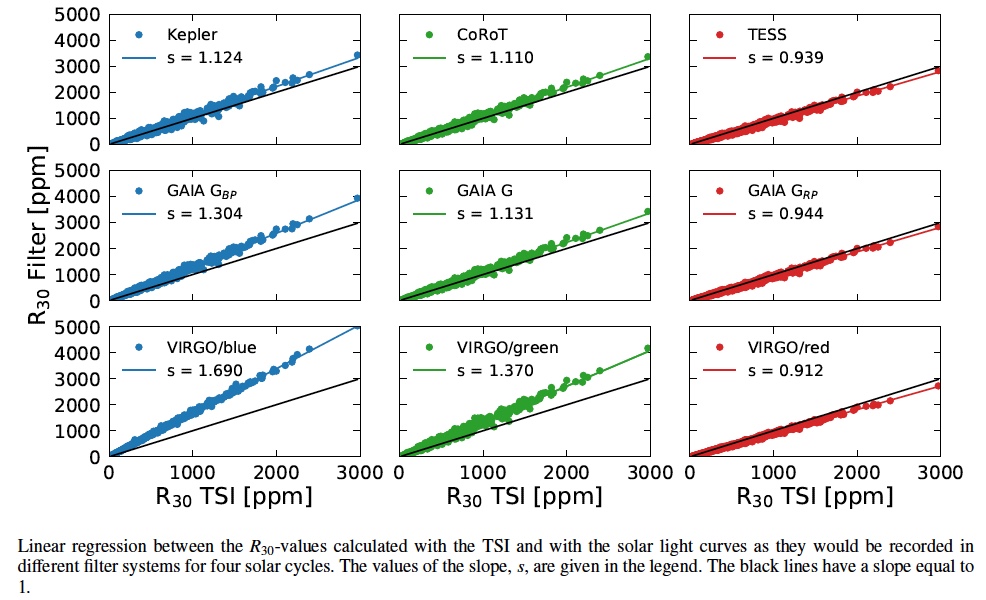
Additionally, we find that across all filter systems, the rotational variability is 15% lower (averaged across all inclinations) than for an ecliptic-bound observer. This 15% almost fully compensates for the 12% higher solar rotational variability in the Kepler passband. We therefore argue that the TSI best represents the Sun as it would be observed by Kepler for a sample of stars with unknown rotation periods.
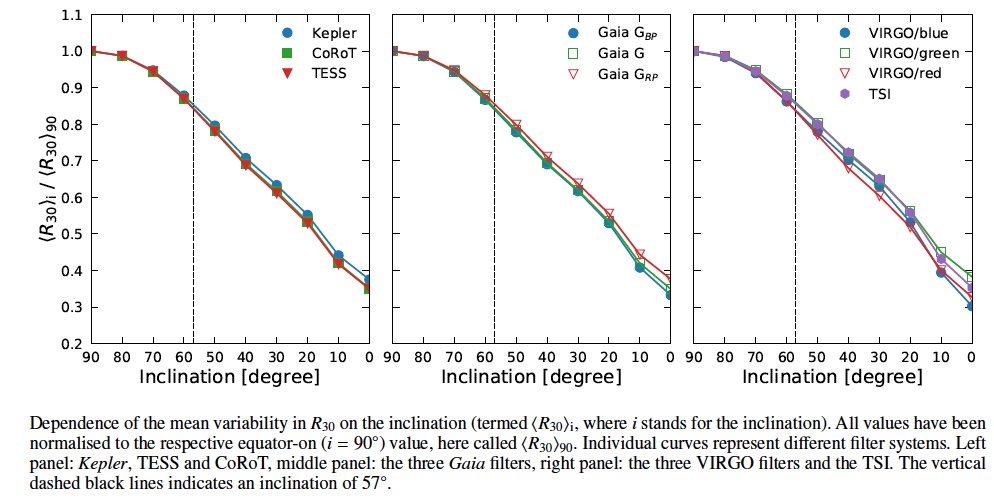
Talks
'Solar brightness variations as they would be observed by the Kepler telescope',2018, N.-E. Nemec,
Co-authors: A.I. Shapiro, N.A. Krivova, R. Cameron, S.K. Solanki, S. Dreizler
XXXth General Assembly of the International Astronomical Union, Vienna, Austria
'Solar brightness variations as they would be observed by Kepler telescope' March 2018
Co-authors: A.I. Shapiro, N.A. Krivova, R. Cameron, S.K. Solanki, S. Dreizler
Conference: 2018 Sun-Climate Symposium, Lake Arrowhead, CA, USA
